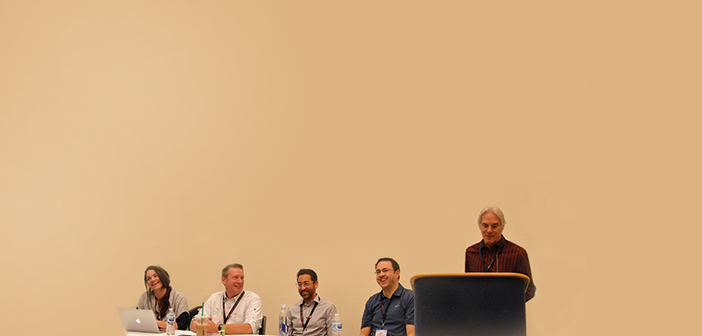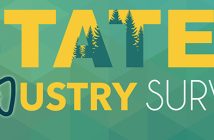Industry data can provide lots of useful information to help you run your business more profitably. It allows you to compare and benchmark your own performance against industry averages. It shows key trends in park activities and amenities, and even where parks are spending their marketing dollars. Knowledge is power.
Adventure Park Insider presented preliminary findings from our latest annual survey in a seminar at the ACCT Conference in early February. (The Resource Guide that arrived alongside this magazine includes the full “State of the Industry Report,” which can also be found online at adventureparkinsider.com.) To provide some expert commentary on those results, we invited Paul Cummings of Strategic Adventures, Micah Salazar of Outdoor Ventures, and Lee Kerfoot of Kerfoot Canopy Tour to share observations during the seminar. We found their comments so compelling that we asked them to share them more broadly, which is what we’re doing here.
PARK ACTIVITIES
We found that parks and traditional programs are all providing more and more options for guests.
Paul Cummings: Almost half of the inquiries we have coming in to our office are from people looking to open multi-attraction parks or facilities. These are typically an aerial park paired with other climbing elements, such as portable climbing walls, via ferrata, and even tree climbing. There are some zip line and aerial park combinations out there as well. We are also seeing an increase in interest for indoor facilities.
PARK AMENITIES
The survey turned up a surprising amount of interest in selling and renting shoes, which are offered by a growing number of parks and tours.
Paul: There is a phrase we like to use: “Rent the shoes, but sell the socks.” Many facilities, including our friends in Hawaii where I first encountered this, will provide an inexpensive closed-toe shoe for the ill-prepared to rent, typically in the $5-$10 range. Socks sell for $5 (no one wants previously worn socks).
Micah Salazar: At Outdoor Ventures, our solution is to sell closed-toe water shoes at a very reasonable price in our gift shop. Water shoes do not require socks, so this solves that issue. Also, this means there are no shoes to clean, and no sanitary issues.
GUEST SPENDING
The “State of the Industry Report” includes data on average guest spending on different amenities. While not a major source of revenue, this income can have an outsized impact on the bottom line—without a great deal of investment.
Lee Kerfoot: We look at our revenue on a per guest basis for gift store sales and picture revenue. Without benchmarking, we had no idea if our gift store sales/guest and picture revenue/guest numbers were good or not. So, before the industry survey existed, we found a few operators willing to share similar numbers, with the mutual goal of trying to improve without competing against each other. It was eye-opening.
For example, my picture revenue (from strictly renting GoPro cameras) was approximately $2.50/guest. Other operators were doing as much as $5/guest. I didn’t realize how much upside there was in the picture revenue/guest.
In 2016, our gift store sales/guest was $3.25. Benchmarking told us other tours were as high as $8/guest. In 2017, we improved our number to $4.38/guest, and we are pushing hard to increase that. Benchmarking showed us there was tremendous opportunity to improve sales and increase our profit. Now I look at it like a fun challenge: how can we grow our revenue/guest?
MARKETING CHANNELS
Marketing channels rightly tend toward digital: websites, Facebook, TripAdvisor, social media. But there are some more traditional media that parks may be overlooking.
Paul: Often we find park owners looking for the next new thing in marketing, at the expense of tested and reliable tools that bring in business. The next new social media platform is probably not where your target market is looking for information.
Billboards are one example of this. We have some clients that are getting 50 percent of their traffic from highway billboards. It’s not sexy, unless you think ROI is sexy. Which, of course, I do.
Micah: Outdoor Ventures has used billboards in the past. But we have found that the top placements are very expensive in our markets; the cost outweighs the benefit for what is available to us at this time. In the past, though, we’ve known of some parks that get perhaps as much as 90 percent of their traffic from billboards. It all depends on the location and the cost.
One often-overlooked digital medium is TV. But again, it can work well when employed properly.
Micah: We regularly use TV advertising in our markets. We strategically use time and placement to target our audience. For a sample, see our ad at https://www.youtube.com/watch?v=wf7OgTTEiB0
And with so many operators relying heavily on digital media, it’s essential to track its performance.
Lee: At first I tried managing pay-per-click (PPC) marketing in Google myself, but I was spending a lot of money on expensive clicks without knowing what was working and what was not. After a few years I decided to find a marketing company to help.
Our first partnership failed, so we hired a marketing company with extensive experience in the zip line industry. The company worked to increase our click through rate, lower our bounce rate, and lower our cost per click. Month by month they improved our metrics, and I saw significantly stronger bookings. We still didn’t know exactly which ads were resulting in reservations, but our booking engine has added that capability, and that allows us to track exactly which ads are producing revenue and which ones are not. I expect further improvement to follow.
Another example of the value of tracking: For us to grow we need to increase volume during the week. Our busiest days of the week are Friday (about 60 percent of capacity), Saturday (90 percent) and Sunday (about 75 percent). Monday through Thursday was significantly slower (about 25 percent).
Leading up to Christmas, we offered full-priced weekend gift certificates and discounted midweek gift certificates. In prior years, gift certificate sales were about $5,000 to $6,000. With the marketing company closely monitoring the metrics and with great midweek prices, we sold more than $50,000 in gift certificates—90 percent of them for midweek.
STAFFING ISSUES
Finding and retaining good staff is a top priority for parks, so salaries and payroll costs are a hot topic. What is the market for good help?
Paul: Management salaries are dependent on a few factors:
• size of the park and staff
• location of the park (NYC managers will probably make more than a manager in Indianapolis)
• profit sharing
I can’t cite average salary levels, but we see them range from $45,000 to $85,000. For regular staff, it’s often minimum wage or slightly above. This can be anywhere from $8 to $15, depending on the state and locale.
Micah: We are often open for 10-12 hours a day, plus the time it takes to inspect courses and equipment prior to opening. As a result, the Adventure Park at Virginia Aquarium has almost 100 staff on the roster when we are in the full summer season. Some staff will work 8-hour shifts, while others will work half shifts.
We employ a few strategies to maintain a successful and positive staff:
• We try to pay a little higher than other jobs they can get in the area.
• We are VERY flexible with their schedules. We use software that allows them to take shifts and trade with their colleagues.
• We provide bonuses and gift cards as an incentive for excellent customer service and for service to our park.
• Last, but not least important, we buy them pizza constantly to keep them going!
There’s a lot more data, and insights to be found, in the complete “State of the Industry Report.” Take a deep dive into the Resource Guide, or purchase the digital edition of the Report here.






